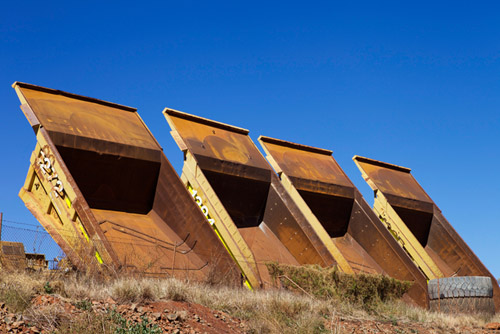-
Mining giant BHP Billiton announced the largest loss in its history in August. The $US6.4 billion decline came on the back of declining commodity prices, falling Chinese demand for iron ore and $US2.2 billion in after-tax costs. The financial figures are alarming.
Much commentary was rightly focused on what BHP’s full-year report means for the company, its shareholders and the industry. But BHP’s very bad year should have us equally focused on environmental, social and governance implications.
"The 21st century mining industry is one which cannot afford to focus only on pure financial strength."
Dr Sara Bice, Professor, Melbourne School of Government, University of MelbourneMore than a decade of social scientific research tells us leading mining companies are adopting a more responsible approach to their work. As I write in my just-released book, Responsible Mining, this shift is critical to staying in business.
Good behaviour in environmental and social performance is regularly represented as risk management, a means to reduce costs of conflict while doing good. Adoption of corporate social responsibility principles and practices in the global mining industry is today so widespread it is institutionalised.
But institutionalisation and prioritisation are different beasts. What are the competing priorities in the current market environment?
{CF_IMAGE}
CLICHÉ
There are a lot of clichés about the Australian economy. A lot of sheep’s backs and two speeds. In 2014, mining contributed 8.5 per cent to Australia’s total output GDP.
Jobs in the industry comprise about 2 per cent of the Australian workforce but this figure is controversial and far larger when the industry’s extensive supply chain and use of contractors is considered.
Much of the industry’s contribution stems from its exports, which rose more than 120 per cent between 2000 and 2010 to $A139 billion. In 2014, minerals and energy exports reached $A195 billion
On a commodity by commodity basis, LNG is also playing a major role in exports, securing third place at $A18.1 billion by end 2014.
For the Australian mining and extractives industry, the current environment marks a shift from boom and construction to maintenance and management.
Yet Australia’s biggest miners remain so because of their long-term perspectives and their ability to anticipate and respond to risks, to predict and prepare for market shocks.
WHICH BOTTOM LINE?
Can we expect a finically struggling company and even an entire industry to attend to concerns beyond the financial bottom line? And if so, what would that look like?
The 21st century mining industry is one which cannot afford to focus only on pure financial strength. Today’s viability comes largely through reputation, legitimacy, acceptance (or at least tolerance) by communities, political acuity and social engagement.
Responsible mining involves holistic assessments of companies’ impacts, including on economic, social, human rights and environmental aspects, and on Indigenous communities.
In the best cases, it involves understanding how an individual company’s impacts might contribute to accumulated impacts felt when multiple miners operate within a geographic region, like the Pilbara or Hunter Valley.
It prizes ethical decision-making and adopts emerging practices, including agreement-making processes like those at the Argyle Diamond Mine, in which signing communities are equal partners, have access to data and advice and secure ongoing monitoring and evaluation, in addition to working grievance mechanisms.
At the same time, responsible mining is not a licence to dig. While humankind will continue to require mining and extractives products well beyond our lifetimes, current knowledge also tells us fossil fuels are beyond the bounds of responsibility and we must look to alternatives.
Responsible mining is geared to the long-term. As a result, it prioritises strong governance while also setting out clear boundaries for the company.
Especially in developing countries where government capacity is limited or absent, mining companies with trucks and dollars must resist the urge to fill the gaps or take on inappropriate social development roles. Attention to appropriate boundaries encourages questioning and prudence in this area.
Hopeful examples from around the globe suggest responsible mining will transform the 21st century mining industry. But there is also concern among social scientists innovation in responsible mining practice may die out too soon.
Attention is turning elsewhere before optimal gains have been achieved. And the current operating environment poses a considerable threat to the gains that have been won.
Cases like BHP Billiton’s will test the sector’s commitment to and belief in the moral and financial value of mining focused beyond the profit margin.
Dr Sarah Bice is a professor at the Melbourne School of Government, University of Melbourne & the author of Responsible Mining: Key Principles for Industry Integrity. This story was originally published by the University of Melbourne.
The views and opinions expressed in this communication are those of the author and may not necessarily state or reflect those of ANZ.
-
EDITOR'S PICKS
-
Doubtless the anecdote of the boiling frog is familiar: if a frog is placed in boiling water, it will jump out but if it is placed in cold water that is slowly heated, it will not perceive danger and will be cooked to death.
21 September 2016 -
One of the key things banks do is borrow money for short periods of time and lend it out for long periods - maybe take deposits for three months and make home loans for 20 years. It is what is called ‘maturity transformation’ and when all goes well, it’s a profitable business.
13 September 2016 -
Things go wrong in business. In this day and age when that happens the news can be instantly all over social media. The community is very sensitive to corporate culture and banks in particular.
19 September 2016

